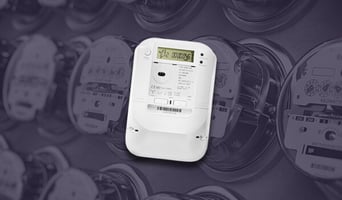What Are Smart Meters? Electricity meters have come a long way since their invention in the 1880s....
Importance of MOOP in Medical Power Supplies
In the realm of medical electronics, ensuring patient safety is essential. While devices like patient monitors and infusion pumps take center stage, a critical, yet often under-recognized component is the medical power supply. Unlike their commercial counterparts, medical power supplies endure stringent testing to meet rigorous safety standards mandated by bodies like IEC 60601-1. This standard emphasizes extremely low leakage current and electromagnetic interference (EMI) to mitigate risks to both patients and operators. The IEC 60601-1 standard also incorporates Means of Protection (MOP) stipulations, which outline measures to minimize the risk of electric shock, further solidifying the importance of safety-centric design principles in medical power supplies.
Understanding IEC 60601 and associated terminology
There are two categories of individuals for whom MOP (means of protection) have been developed to ensure medical safety.
● MOOP: Refers to the operator of the device, such as a doctor, nurse, radiologist, sonologist or any other para-medical staff
● MOPP: Refers to the patient, whose safety is of paramount importance.
The critical distinction between MOPP (Means Of Patient Protection) and MOOP (Means Of Operator Protection) lies in the vulnerability of the individuals being safeguarded. Patients, often unconscious or unable to react due to medical conditions, require the highest level of protection (MOPP). This translates to stricter isolation barriers and withstand voltages to minimize leakage currents and potential shock hazards. In contrast, MOOP caters to trained medical professionals who are generally alert and can take steps to avoid electrical dangers. Consequently, MOOP allows for slightly less stringent isolation requirements compared to the more robust MOPP standards.
When selecting power supplies for medical applications, understanding MOOP and MOPP is crucial. Both require compliance with various safety parameters and classifications. The key concept is "protection isolation" which prevents the equipment from direct contact with hazardous voltages. To further enhance safety, designers often incorporate dual isolation layers (2xMOOP or 2xMOPP) that provide redundancy in case one layer fails.

By understanding MOOP ratings and their significance, you can ensure medical-grade power supplies prioritize patient well-being and create a safer environment for both patients and medical professionals. MOPP and MOOP prioritization in medical power supply design upholds the highest standards of patient safety and regulatory compliance.
Achieving MOP
Several techniques contribute to achieving the necessary level of MOP depending on the application. By strategically integrating these techniques, engineers ensure their power supplies comply with rigorous medical electrical safety standards.
Safety Insulation
Safety insulation utilizes high-quality insulating materials to physically isolate live parts from non-live parts within the power supply. This significantly reduces the risk of leakage currents that could lead to electrical shock. As depicted in Figure 1, the insulation barrier between the primary and secondary circuits must meet a minimum of 2x MOPP standards. In contrast, the insulation between the primary circuit and protective earth (grounding) typically needs to meet 1x MOPP under normal operating conditions.

Protective Grounding
In medical devices, protective grounding (also known as earthing) is a critical safety measure. It involves connecting conductive equipment enclosures to the earth ground. This path serves to divert leakage current, a small, unintended current that escapes the device's intended circuit path. By providing a low-impedance path for leakage current to flow, protective grounding minimizes the potential for the current to travel through the patient or operator. This significantly reduces the risk of electrical shock and ensures a safer operating environment.

Creepage Distance
Creepage is the shortest distance along insulation between two conductive parts. A larger creepage distance makes it harder for a current to arc or jump across the gap, further enhancing safety.

Air Gap
Clearance refers to the shortest distance in air between two conductive parts. This air gap serves a critical purpose: it physically separates the conductors, preventing unintended current flow. By introducing this physical separation, clearance mitigates the risk of leakage currents and potential arcing faults that could occur if the conductors were too close. The selection of an appropriate clearance distance depends on various factors, including the voltage rating of the system, environmental conditions, and applicable safety standards.
Protective Impedances
Protective impedances are strategically placed to limit fault currents. These current surges can arise from various scenarios like short circuits or component failures. By introducing resistance or reactance into the circuit path, protective impedances act to mitigate these overcurrents. This helps safeguard equipment from overheating and potential damage, ultimately enhancing overall system reliability and user safety.
Conclusion
MicroPower Direct offers power supplies that are meticulously designed to meet the demanding needs of medical environments. These devices comply with stringent medical safety standards for electrical equipment. MPD offers a comprehensive selection with varying output power levels, input voltage ranges, and packaging options to ensure a perfect fit for your medical device. By adhering to both MOPP and MOOP regulations, MPD prioritizes the safety of patients and healthcare professionals, fostering confidence in the reliability and performance of medical equipment.




SUBSCRIBE NOW
Stay ahead of the curve—subscribe to our newsletter for the latest insights and innovations in power conversion technology!